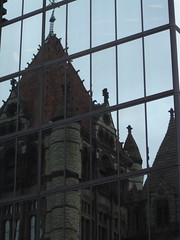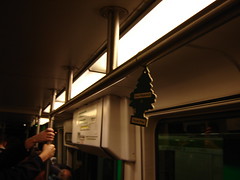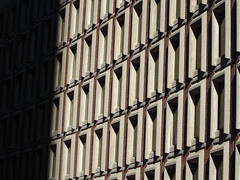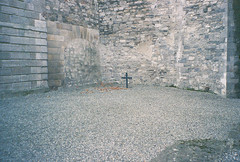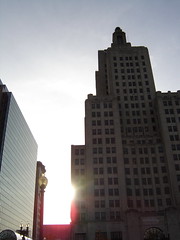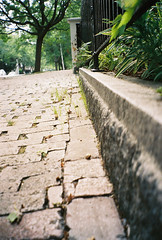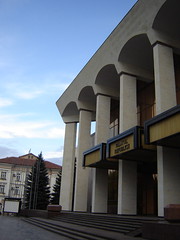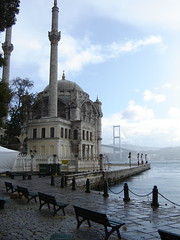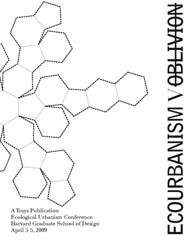Boston's Modern(ist) Life Pt. 2
So, I've spent the past week pondering Ryan's comments on my last post. I think he has point. Perhaps the problem has been more with modernist planning then with modernist architecture. It is hard, however, to totally separate the two. I was reading this great passage the other day, and I think it's worth repeating:
"Perhaps the most damaging to the historic city was (the proposal) that modern structures should break with the sculptural system by which individual buildings in European cities became part of a larger urban whole. (sic) Since the Renaissance, European cities had been configured by integrating individual buildings into the larger sculptural mass of the block and allotting the negative space between blocks of buildings to serve as the circulation network of the metropolis. In this system, the front face of each building lines up with its neighbors to form a continuous street wall, and the open space between the street walls is devoted to sidewalks and roadways. Thus each building, no matter how idiosyncratic, is still part of a larger urban design. (sic) Le Corbusier suggested that the whole idea of the historic city block as a unifying sculptural mass should be abandoned - that modern buildings should not adhere to this age-old architectural social contract but should stand in open spaces, disconnected from their historic neighbors. As a result, not only would the design of his buildings be radically different and their size enormous, but the centuries-old dialogue of buildings, wherein each structure's design entered the communal urban architectural conversation, would be ended."
-Anthony M. Tung (2001)
As you can see, the very form that modern buildings have taken has lead them away from traditional urban structure. So, the question is: can modernism be incorporated into the urban fabric, and if it can, is it still modernism?
The Hancock Tower in Boston's Back Bay is a building that I feel has done well blending into the city. The Hancock was designed by I.M. Pei and built about 20 years ago. It's the second tallest building in Boston (and about 4 feet shorter then the IDS). It could not be more different from it's surroundings. It's about 52 stories higher then every building on the surrounding blocks. It sits at a weird angle, instead of on the Back Bay's regular grid. It's made of glass, every other building around it is masonry. Yet, it works. Why? It reflects everything around it. The top half looks like the sky. The bottom part reflects the beautiful Trinity Church across the street. It's gorgeous.
So, in retrospect, build using contemporary forms but respect the ways that cities work. The End.
Read more...
"Perhaps the most damaging to the historic city was (the proposal) that modern structures should break with the sculptural system by which individual buildings in European cities became part of a larger urban whole. (sic) Since the Renaissance, European cities had been configured by integrating individual buildings into the larger sculptural mass of the block and allotting the negative space between blocks of buildings to serve as the circulation network of the metropolis. In this system, the front face of each building lines up with its neighbors to form a continuous street wall, and the open space between the street walls is devoted to sidewalks and roadways. Thus each building, no matter how idiosyncratic, is still part of a larger urban design. (sic) Le Corbusier suggested that the whole idea of the historic city block as a unifying sculptural mass should be abandoned - that modern buildings should not adhere to this age-old architectural social contract but should stand in open spaces, disconnected from their historic neighbors. As a result, not only would the design of his buildings be radically different and their size enormous, but the centuries-old dialogue of buildings, wherein each structure's design entered the communal urban architectural conversation, would be ended."
-Anthony M. Tung (2001)
As you can see, the very form that modern buildings have taken has lead them away from traditional urban structure. So, the question is: can modernism be incorporated into the urban fabric, and if it can, is it still modernism?
The Hancock Tower in Boston's Back Bay is a building that I feel has done well blending into the city. The Hancock was designed by I.M. Pei and built about 20 years ago. It's the second tallest building in Boston (and about 4 feet shorter then the IDS). It could not be more different from it's surroundings. It's about 52 stories higher then every building on the surrounding blocks. It sits at a weird angle, instead of on the Back Bay's regular grid. It's made of glass, every other building around it is masonry. Yet, it works. Why? It reflects everything around it. The top half looks like the sky. The bottom part reflects the beautiful Trinity Church across the street. It's gorgeous.
So, in retrospect, build using contemporary forms but respect the ways that cities work. The End.
Read more...

